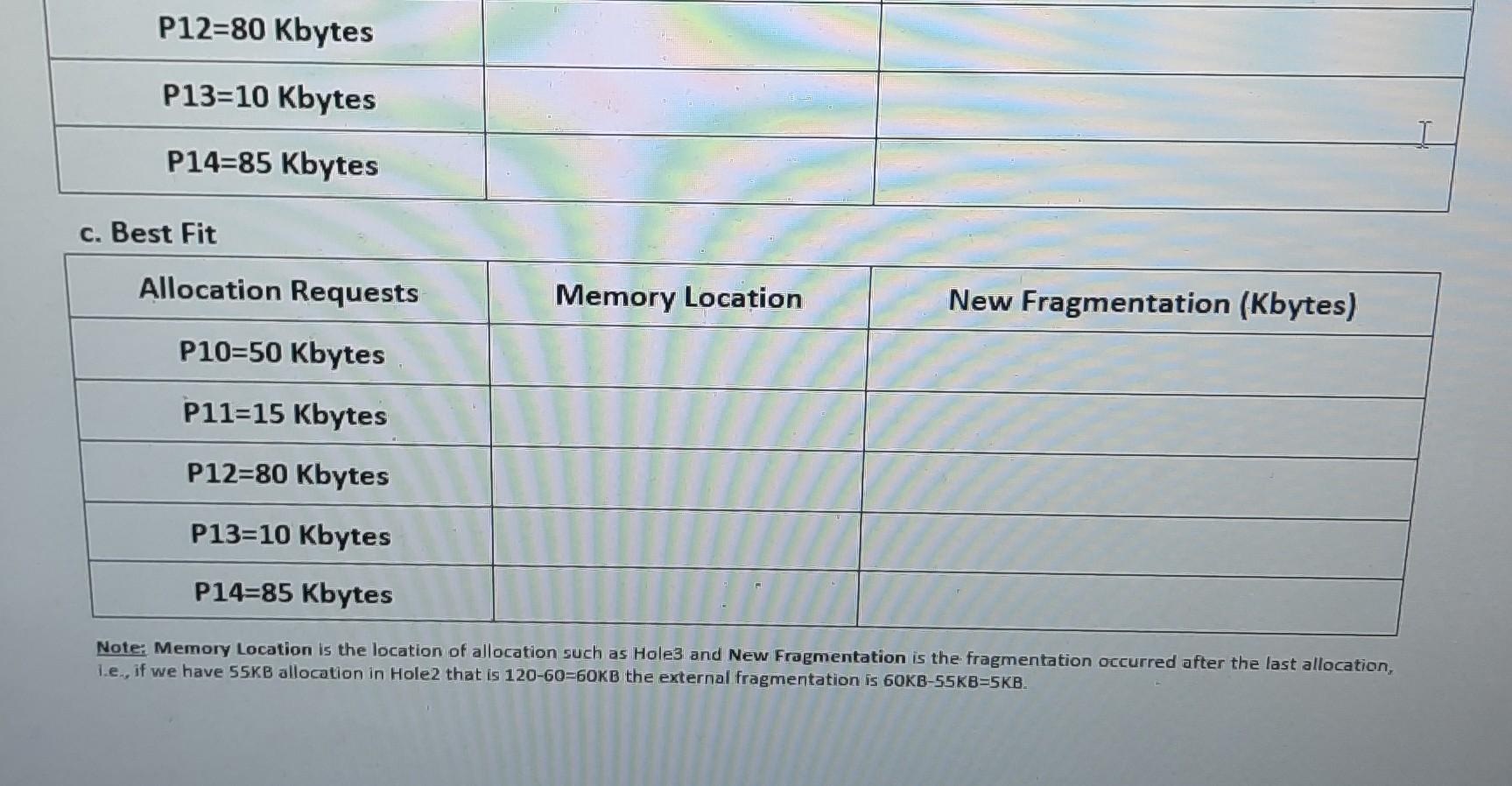Answered step by step
Verified Expert Solution
Question
1 Approved Answer
Question 1. Memory Management, Dynamic Partitioning Consider a dynamic partitioning swapping system in which memory consists of 640KBytes as shown below: Hola 1 2 Hole


Question 1. Memory Management, Dynamic Partitioning Consider a dynamic partitioning swapping system in which memory consists of 640KBytes as shown below: Hola 1 2 Hole 2 3 Hola 3 PO Hole 4 27 Hole 6 pg Hoe o 0 40 00 120 100 266 206 440 630 040 Where Hole1 = 40KB, Hole2 = 60KB, Hole3 = 95KB, Hole4 = 100KB, Hole5 = 90KB and Hole6 = 35KB indicate the unused memory partitions. Note that P2, P3, PS, P7 and P9 are processes in memory. Assume that process P3 was just swapped into memory and new processes arrive in the order P10, P11, P12, P13, P14 and are of size 50KB, 15KB, BOKB, 10KB and 85KB, respectively, How would each of the first-fit, next-fit and best-fit algorithms place processes of P10, P11, P12, P13 and P14? I a. First Fit Allocation Requests Memory Location New Fragmentation (Kbytes) P10=50 Kbytes P11=15 Kbytes P12=80 Kbytes P13=10 Kbytes P14=85 Kbytes b. Next Fit Allocation Requests Memory Location New Fragmentation (Kbytes) P10=50 Kbytes P11=15 Kbytes P12=80 Kbytes P12=80 Kbytes P13=10 Kbytes P14=85 Kbytes c. Best Fit Allocation Requests Memory Location New Fragmentation (Kbytes) P10=50 Kbytes P11=15 Kbytes P12=80 Kbytes P13=10 Kbytes P14=85 Kbytes Note: Memory Location is the location of allocation such as Hole3 and New Fragmentation is the fragmentation occurred after the last allocation, 1.e., if we have 55KB allocation in Hole2 that is 120-60=60KB the external fragmentation is 60KB-55KB=5KB
Step by Step Solution
There are 3 Steps involved in it
Step: 1

Get Instant Access to Expert-Tailored Solutions
See step-by-step solutions with expert insights and AI powered tools for academic success
Step: 2

Step: 3

Ace Your Homework with AI
Get the answers you need in no time with our AI-driven, step-by-step assistance
Get Started


